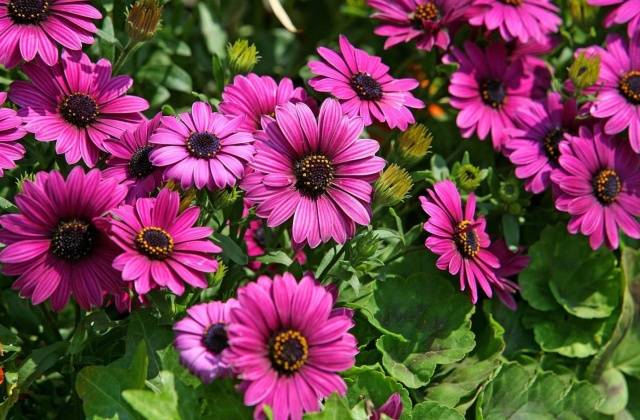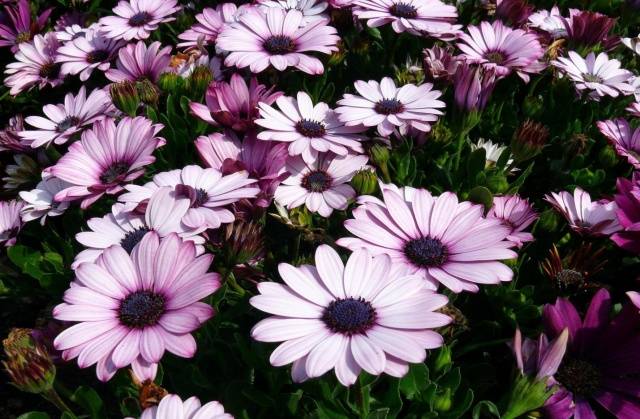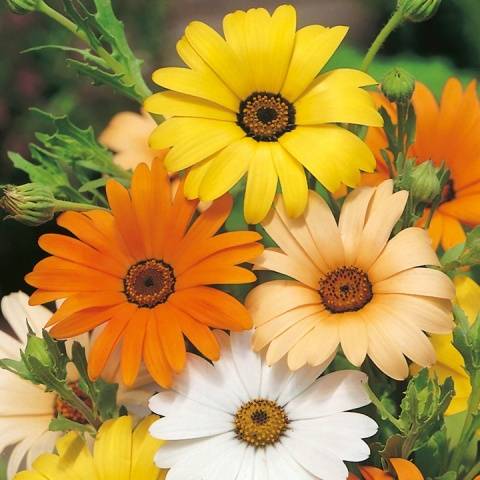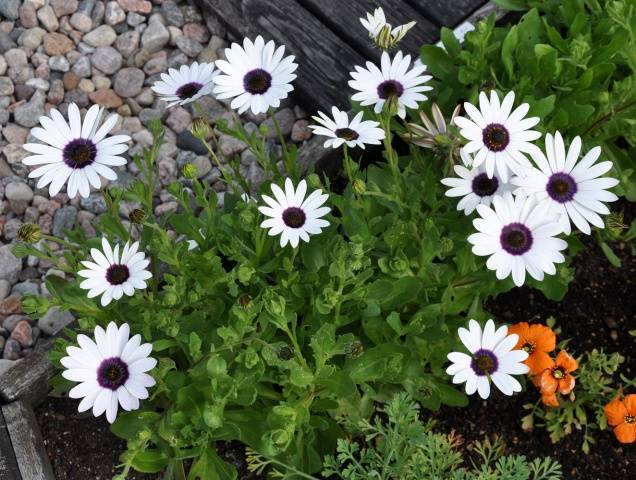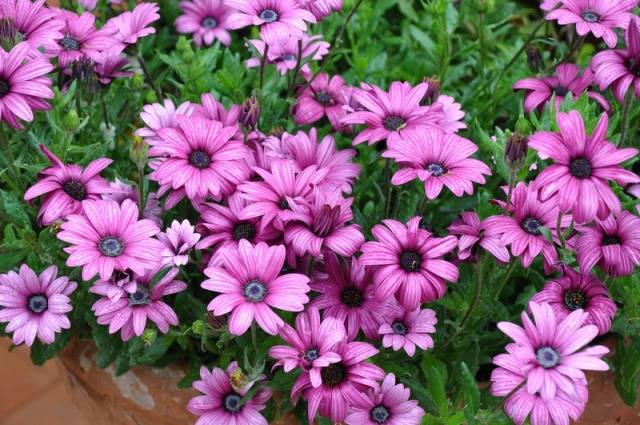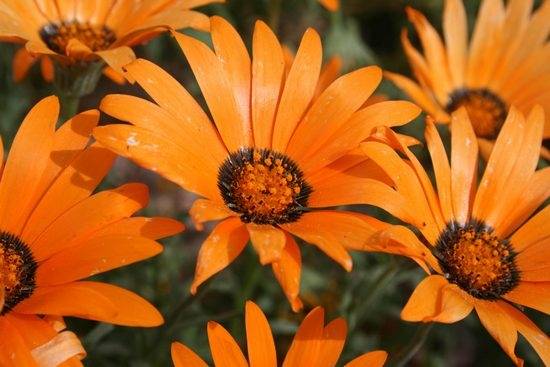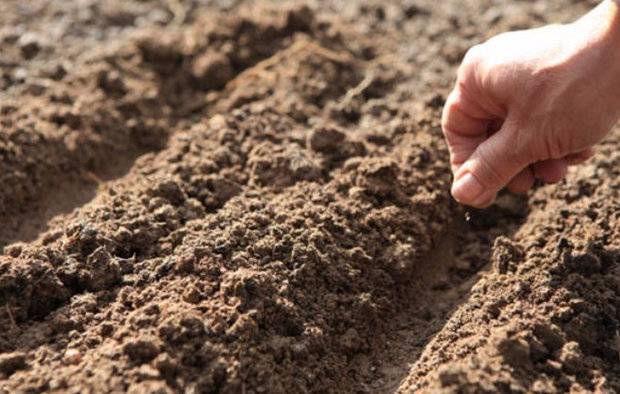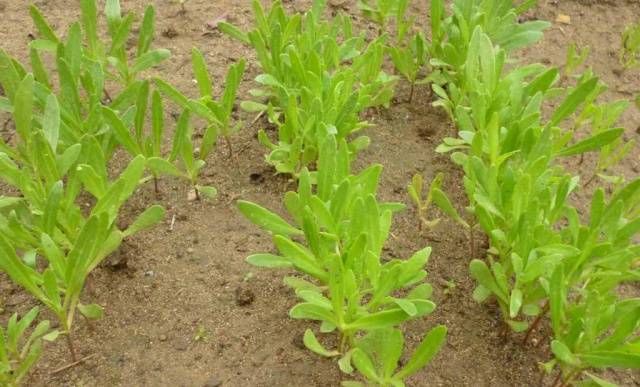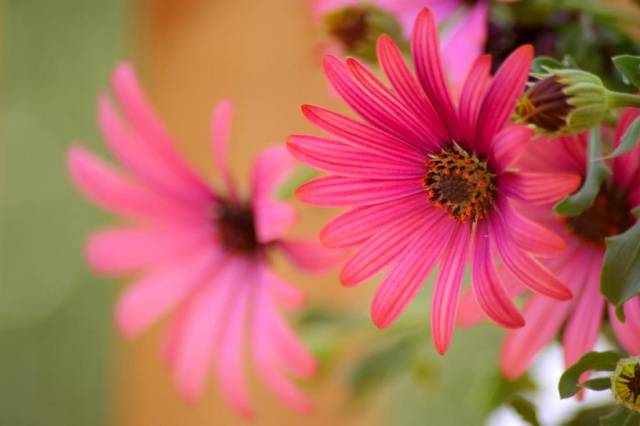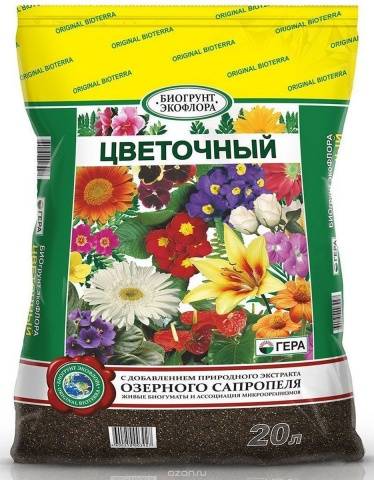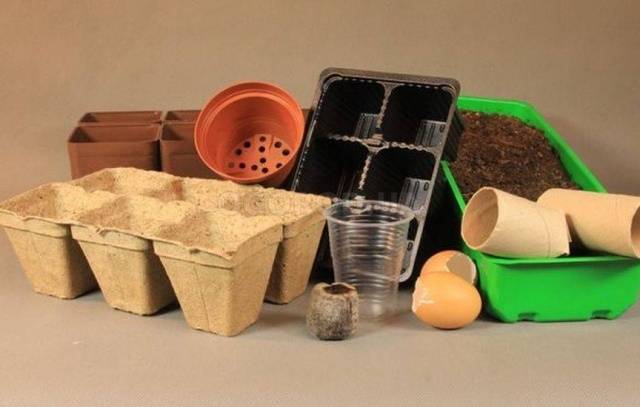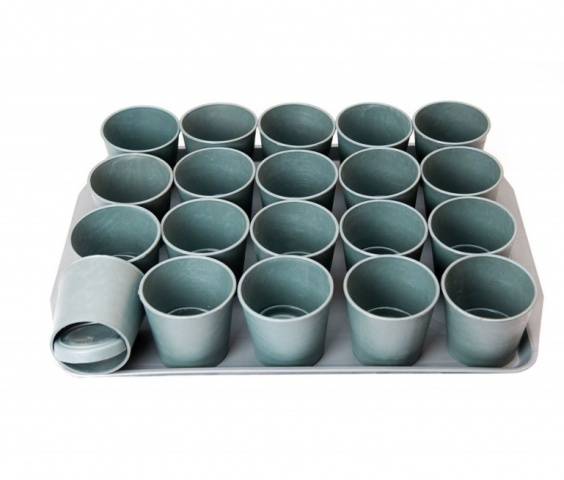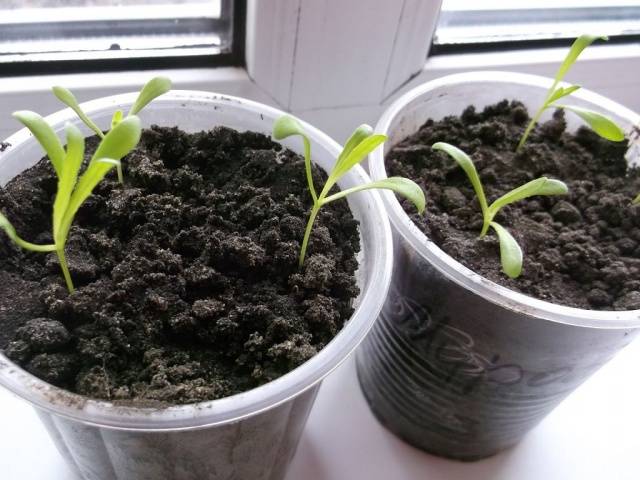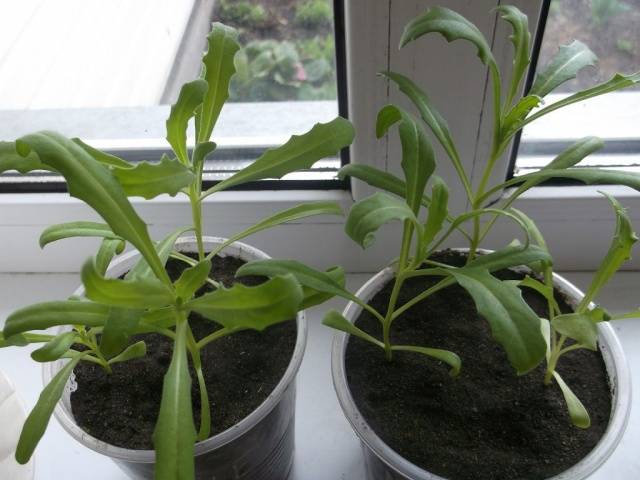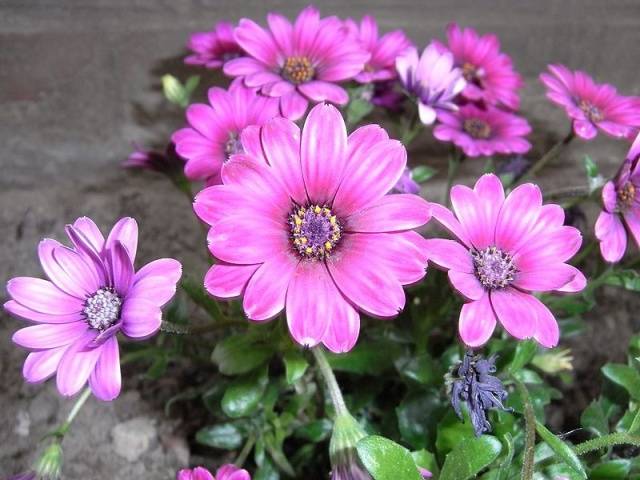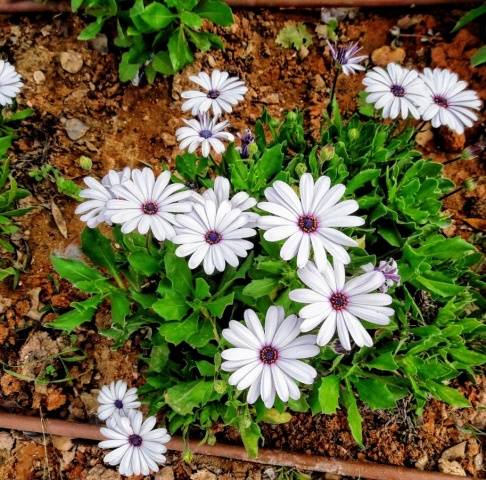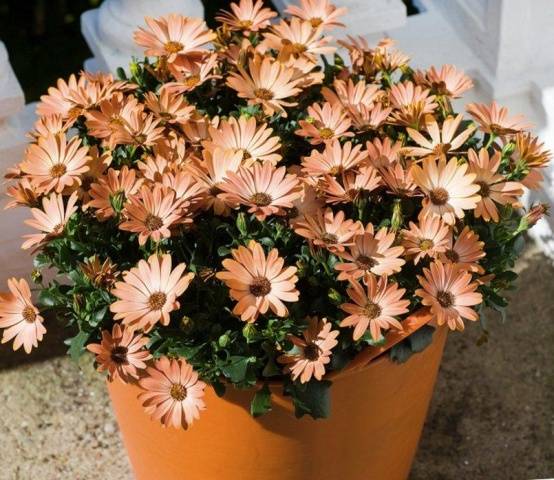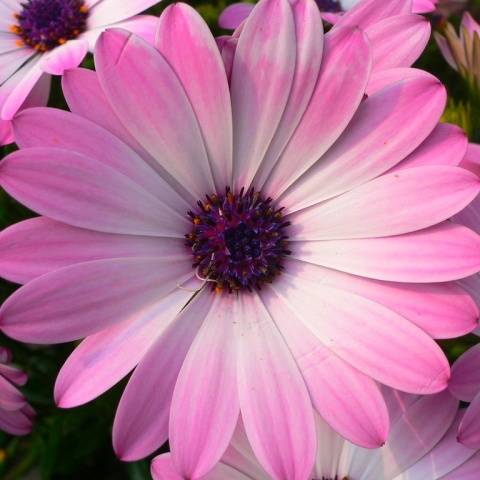Content
Despite the fact that it is winter outside the window, gardeners and flower growers do not sit idle. February is the perfect time to decide on the assortment of flowers that will decorate your backyards during the season. Most often, the choice of gardeners is influenced by factors such as ease of growing, the duration of flowering and the beauty of the inflorescences. One of the popular flowers that many gardeners must plant for is Dimorfoteka. Growing this extraordinary and beautiful plant from seeds is not particularly difficult.
Brief description of the plant
Dimorphoteka is a low plant intended for growing on a personal plot, in flowerpots, rabatkas, on loggias or balconies. But before growing Dimorphotek from seeds, it is important to familiarize yourself with the rules of planting and subsequent care.
The homeland of flowers belonging to the Aster family is South Africa. Occasionally, for the fact that the Dimorphoteka baskets look like Calendula flowers, it is called "Cape Marigolds" or "Cape Daisies". Dimorfoteka appeared on Russian household plots relatively recently. But growers have already noted the advantages of this unique plant, which are as follows:
- ease of growing;
- long flowering period;
- resistance to many diseases and pests;
- versatility.
In its historical homeland, Dimorfoteka, growing in the wild, is a perennial. But flower beds and flower beds are usually decorated with annual plants bred by breeders.
The flowers of Dimorfoteka resemble modest, but beloved by everyone, large, garden daisies. Here are just the colors of the reed petals are presented in a variety of colors. They can be snow-white, pale cream, yellow, orange, pink, burgundy, lilac. The middle of the flowers are mostly several shades darker than the petals.
The first buds appear on Cape Marigold 3 months after planting the seeds. Dimorfoteka blooms violently in sunny weather. Bright, beautiful flower beds are like a fabulous carpet. In cloudy weather and with the approach of evening, the inflorescences close.
The height of Dimorphoteka varies from 20 cm to 40 cm, depending on the variety. The size of flowers is from 6-7 to 10 cm in diameter. Lush and long flowering Dimorfoteka grown from seeds will delight flower growers from mid-June to late August.
Thanks to the tireless work of breeders, over the past decade, more than 20 species of Dimorphoteka have been bred, the color range of which is simply amazing. But the most widespread at the moment on the territory of Russia are only three types:
- Dimorphoteca notched. Differs in the peculiar shape of the leaves. Plant height 30-40 cm. The size of flowers is up to 7 cm in diameter. Orange or yellow inflorescences with a dark brown center. Dimorfoteka blooms very profusely, covering the backyards with a bright, luxurious carpet.
- Dimorphoteka rain. Plants are almost half as low, up to 20 cm in height. The petals are white, dark purple at the base. The underside of the petals is also purple.The size of the inflorescences can reach up to 10-12 cm in diameter.
- Dimorphoteka is hybrid. An annual plant from 15 to 40 cm high. Baskets of flowers up to 7 cm in diameter can be of the brightest color: yellow, azure, pink, pale lilac, orange, purple. Most often, seeds for growing Dimorphoteka hybrid are sold in mixtures.
See how beautiful Dimorfoteka flowers are
Growing methods
Dimorphoteca annual is a self-pollinating plant and reproduces mainly by seeds. You can plant flowers directly in open ground in early to mid-May, or grow Dimorphotek for seedlings.
With the seedless method of growing Dimorfoteka from seeds, the first inflorescences appear on the bushes a month later than with seedlings. That is, you can enjoy the beautiful view of the first flowers only in mid-late July.
Also, Dimorfoteka perfectly reproduces by self-seeding in central Russia. The seeds perfectly tolerate winter frosts, and in the spring the first shoots appear in the flower garden, which will only need to be thinned out.
If you wish, you can choose the most beautiful and favorite flowers, and as soon as the buds fade, darken and dry, cut the flower baskets. Dimorphoteka seeds need to be dried well in a warm place and sent for storage. The seeds remain viable for two years. Subsequently, the percentage of germination is significantly reduced every year.
Seedless way
This growing method is not suitable for all regions. Mostly, it is possible to grow Dimorphotek from seeds immediately in the open field only in the southern and central regions. But in areas with a more severe climate, where spring comes a few weeks later, it is still better to plant Dimorfotek for seedlings. When to sow seeds, and how to care for plants, you will learn from the article.
When growing Dimorphoteka outdoors, it is important to adhere to several rules:
- The place for the flower garden should be sufficiently illuminated by the sun's rays.
- Dimorphoteka is critical to waterlogging.
- Seedlings will need to be cared for for several weeks after sowing.
Loose and fertile soil is a prerequisite for the abundant and long-term flowering of Dimorfoteka. The selected area must be carefully prepared in advance - fertilize and dig up.
In mid-late May, the ideal time comes when it is time to plant Dimorphotek in open ground. The main thing is that the air temperature at night is firmly established at around + 8˚С + 10˚С.
It is necessary to sow Dimorphoteka seeds in grooves, the distance between which should be at least 15-20 cm.Do not deeply deepen the seeds, otherwise the germination process will take too long. The optimum depth is 3-5 mm. Pour plenty of warm, settled water over the flower bed. The first shoots of Dimorphoteka should appear in 1.5-2 weeks.
A couple of weeks after germination, remove excess seedlings so that the plantings are not too thickened. Further care when growing Dimorphoteka from seeds is to carry out standard procedures for each grower:
- watering;
- weeding;
- loosening;
- top dressing.
Mid to late April is the ideal time to plant Dimorphotek in greenhouses or greenhouses. After sowing, the land must be covered with foil or lutrasil. When the seedlings grow up, they need to be transplanted to a permanent place.
Water the flowers as needed, given that Dimorfoteka does not like waterlogging.Feed Cape daisies with mineral complex fertilizers 2-3 times until the first buds appear. Subsequently, it is better to refuse feeding.
As you can see, growing Dimorphoteka from seeds is a simple process that does not require any special skills or abilities.
We sow Cape marigolds for seedlings
Growing Dimorphoteka from seed for seedlings is the most common method used by most flower growers. And this method has many advantages:
- flowering begins several weeks earlier, in early June;
- seedlings grown at home are much stronger and more resistant than Dimorfoteka planted directly in the ground;
- growing Dimorphoteka seedlings at home, you will protect your seedlings from the destructive invasion of pests, for which young growth is a favorite delicacy.
In addition, you can plan carefully and plant these unpretentious flowers in your garden without haste. And a novice florist will also cope with growing Dimorphoteka from seeds at home.
Landing dates
In order for the first flowers to decorate your flower beds in early June, the optimal time to plant Dimorphotek for seedlings comes in late March - early April. In this case, a transplant into open ground is planned for mid-late May.
Residents of the southern regions can sow Dimorphoteka seeds a couple of weeks earlier. And in areas with a harsh climate - on the contrary, a couple of weeks later. On average, at least 1.5-2 months should pass from sowing to transplanting into open ground. This time will be enough to grow strong and healthy Dimorphoteka seedlings.
Therefore, when determining the timing of when to plant Dimorfotek, be guided by the peculiarities of the climate in your region. It is important that at the time of transplanting seedlings, the threat of spring frosts has passed.
Preparation of suitable containers and soil
When growing Dimorphoteka from seeds at home, it is important to properly prepare the soil. The composition of the soil should be soft, loose and fertile, with a good ability to pass excess moisture.
The soil purchased in special stores is perfectly balanced in the composition of mineral and nutrients and does not need any additives or processing before sowing.
But the garden soil before sowing seeds of Dimorfoteka needs preliminary processing. First of all, the soil must be disinfected. This can be done in two ways.
The first is to water the soil abundantly with a pink solution of potassium permanganate. After that, the soil must be left at room temperature for several days. The second method is to heat the soil in the oven for 30-40 minutes. Water and leave to stand for a day.
Be sure to add peat and sand, as well as humus to the garden soil. The optimal ratio for 1 kg of garden soil:
- peat - 0.5 kg;
- sand - 0.8 kg;
- humus - 0.5 kg.
Stir the soil mixture thoroughly, water and let it stand for 24 hours.
There is only one requirement for a container for growing Dimorphoteka seedlings from seeds - the presence of drainage holes. For the rest, you can pick up a container from the series "what was at hand". Disposable dishes, plastic and plastic cups, cut bottles, containers - you can use anything.
When growing Dimorphotes of various varieties, it is advisable to select different containers and label them in accordance with the name of the variety and the day of planting.
Dimorphoteka seedlings grow well in peat pots or tablets, which will allow you to exclude the picking process and subsequently facilitate transplantation to a permanent place.
Lay a small layer of drainage on the bottom of the prepared containers, and fill 3/4 of the volume with ready-made soil. Spread Dimorphoteka seeds on the surface at a distance of 2-2.5 cm from each other. Sprinkle on top with a very thin layer of sand or earth, purely symbolic. Moisten plantings with a spray bottle, cover with foil or glass, and put in a warm place.
The temperature in the room where the seedlings of Dimorphoteka are grown should not fall below + 16˚С + 18˚С. Plantings need to be aired and moistened daily as needed. As soon as the first green shoots appear, that is, 7-10 days after sowing, remove the shelter and place the container with Dimorphoteka seedlings on the windowsill.
Dive seedlings
Before proceeding with the dive, it is worth mentioning that Dimorfoteka at any stage of growing it is difficult to tolerate a transplant. Therefore, you need to dive flowers as early as possible and with extreme caution so as not to damage the root system.
Dimorphoteka grown from seeds at home, despite being unpretentious in cultivation and care, has a very weak root system, which is difficult to recover even after the slightest damage.
It is advisable to start diving Dimorphoteka when 2-3 pairs of true leaves appear on the seedlings. Moisten the seedlings a day before transplanting so that the picking process goes without complications.
Prepare in advance the soil and volumetric containers, or disposable cups with drainage holes at the bottom. It is necessary to dive the seedlings exclusively by the transshipment method, that is, together with a lump of earth.
When diving Dimorphoteka seedlings grown from seeds into boxes or containers, the distance between seedlings should be at least 10-12 cm.In general, Dimorphoteka's diving is not much different from a traditional transplant:
- in containers, on the bottom of which drainage is laid, pour prepared soil;
- make a small hole and pour some water into it;
- carefully remove the plants with a lump of earth, trying to preserve the roots, and place them in the finished hole;
- Fill the empty space with soil and spray the soil again with a sprayer.
Immediately after picking, containers with Dimorphoteka seedlings should be placed in a relatively bright and cool room. Young plants should not be exposed to bright sunlight. After 3-4 days, when it becomes clear that the seedlings have taken root, you can transfer Dimorphotek to the windowsill.
Further care involves performing the usual activities:
- moderate watering 1-2 times a week;
- fertilizing with mineral fertilizers;
- compliance with the optimal indoor climate.
When growing Dimorphoteka from seeds at home, plants are often affected by fungal diseases. To prevent this from happening, it is important to follow the recommendations regarding watering, the planting scheme and the microclimate of the room where the containers are located.
Open ground transplant
In mid-late May, when the weather is finally set and the threat of spring frosts has passed, the Dimorfoteka seedlings, grown from seeds at home, are ready for transplantation into open ground. But before that, it is necessary to carry out preparatory work:
- choose the right place for Dimorfoteka
- prepare the ground;
- harden the seedlings.
A well-lit area will be an ideal place to grow Dimorfoteka. Flowers react relatively calmly to piercing winds.But pay attention to the occurrence of groundwater. Those places where groundwater passes too close to the soil surface are not suitable for a future flower bed.
Before planting seedlings of Dimorphoteka, the soil must be fertilized, if necessary, add sand and humus, and carefully dig it up.
It is necessary to harden the seedlings of Dimorphoteka grown at home gradually. Take the seedling containers outside daily. In the first days, the hardening time should not exceed 1-1.5 hours. It is advisable to place boxes with young plants in the shade so that the bright sun does not burn the delicate foliage.
Now you can start transplanting Dimorfoteka into open ground. The optimal distance between the planting holes should be at least 15-20 cm. Cape daisies grow well.
Transplant Dimorphoteka seedlings using the transshipment method. Remove the plants from the container along with a lump of earth, place them in the prepared holes, and fill the empty space with soil. Compact the soil slightly at the base of the seedlings and pour warm water over the flowers.
Dimorphoteka can be grown not only in flower beds or in a flower bed, but also in discounts, flowerpots, containers. Abundantly and long flowering plants will decorate gazebos, loggias, balconies for a long time.
Further care
The subsequent care of Dimorphoteka grown from seeds differs little from standard work in a flower garden.
Flowers need regular weeding and loosening. Weeds can cause not only a decrease in flowering, but also the emergence and spread of fungal diseases.
Watering Dimorphotek is necessary as needed. Pay close attention to the condition of the soil. Plants tolerate drought well. But the slightest stagnation of moisture immediately affects their condition.
Dimorphoteka, grown from seeds at home, needs regular fertilizing with mineral fertilizers for lush flowering. Fertilize the flowers for the first time 10-15 days after transplanting. Subsequent feeding is carried out with a break of 3-4 weeks. With the appearance of the first buds on the bushes of Dimorfoteka, fertilizers must be abandoned.
Diseases and pests
When growing Dimorphotes from seeds, insect pests bypass flower beds and flower beds. But fungal diseases can often affect these beautiful and unusual plants.
The main reasons for the occurrence of gray or root rot are non-observance of the rules of agricultural technology and the recommended planting scheme. If the first signs of illness appear, stop watering immediately and loosen the soil in the flower garden well.
Severely affected parts of the plant must be removed from the site. If necessary, carry out thinning and treat Dimorphoteka with Bordeaux mixture or preparations containing copper.
Conclusion
Growing Dimorphoteka from seeds on a personal plot is an interesting and exciting activity. A novice florist can also cope with this simple matter. And the reward for your work and care will be a colorful and delightful floral carpet that stretches at your feet.
